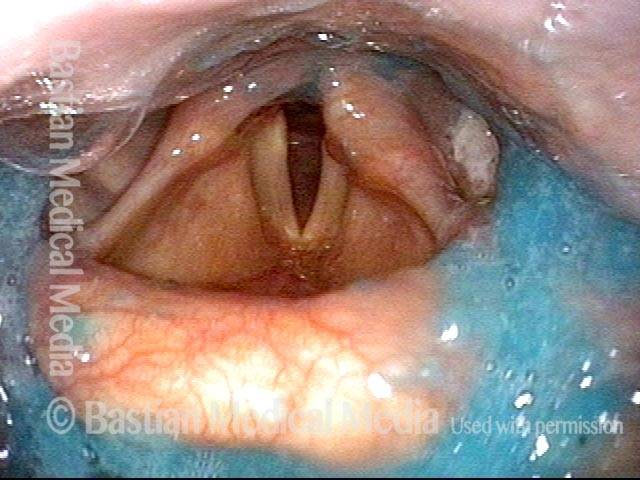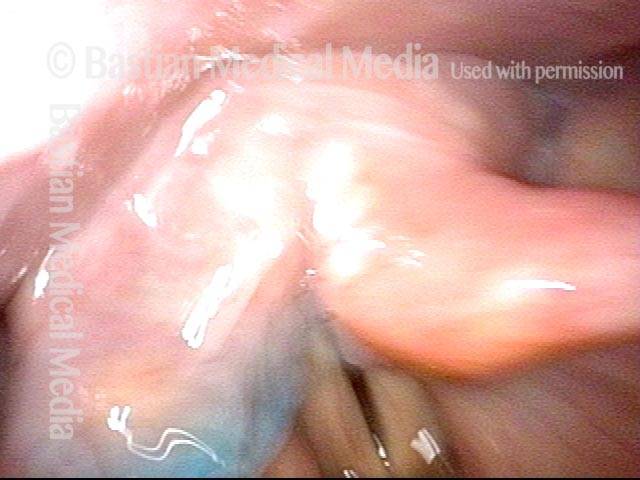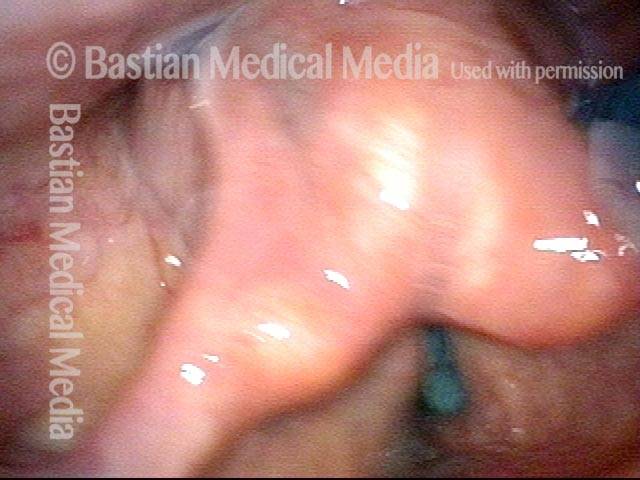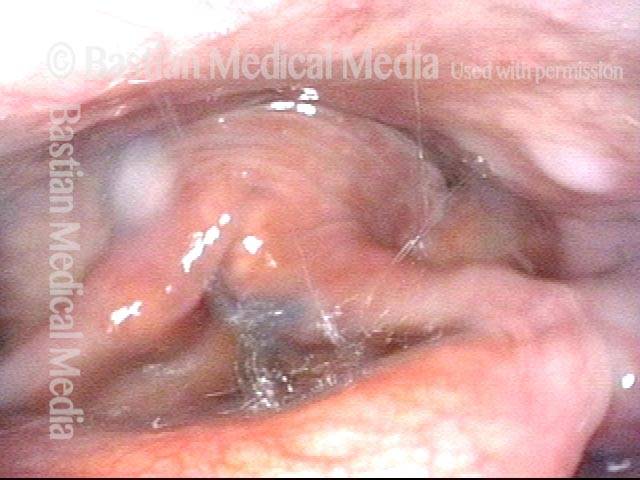A maneuver in which, just before swallowing, a person drops the chin to or toward the chest. This maneuver has the effect of narrowing the pharynx so that the propulsive forces of swallowing have a smaller passageway in which to work, which can help to counteract some individuals’ tendency toward hypopharyngeal pooling, laryngeal penetration, or even aspiration. The chin tuck maneuver can be “tested” for its efficacy during both the videoendoscopic swallowing study and videofluoroscopic swallowing study, in order to determine whether this maneuver should become a formal part of the patient’s swallowing strategy.




